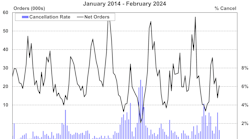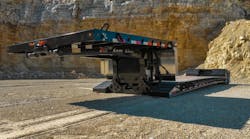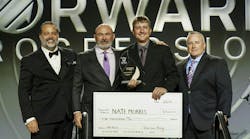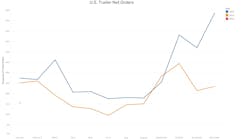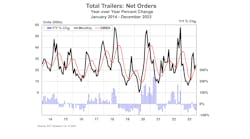Maybe it’s the spike in regulations that have been hitting our industry in recent years, but it sure seems like more people than ever want to know how regulators are calculating the benefits of the rules that are being implemented.
A recent Wall Street Journal story titled “Cracking Washington’s Black Box” took a look at the assumptions upon which our government makes the decisions that impact each of us.
It’s not just EPA or NHTSA, two agencies that have been the focus of the commercial truck and trailer industry the past couple of years, that need solid information for sound decision making. Congress needs data to make decisions on legislation. Changes in tax policy, for example, can affect the entire economy. Estimates of those effects are based in part on numbers crunched deep within the bowels of places such as the Office of Tax Analysis. There nameless faces calculate estimates using undisclosed statistical models based on assumptions that the Congressmen who write tax law do not see.
Federal agencies are required by law to justify their proposals before enacting them into law. As part of that process, regulators will include in their Notice of Proposed Rulemaking the benefits that will accrue because of the rulemaking they plan to implement. And they will try with varying degrees of success to determine how much the proposed regulation will cost those who are to be regulated.
A research project completed last month pokes a few holes in the cost-benefit analysis that regulators used to justify slapping fuel economy standards on trailers. “The Energy Paradox and the Adoption of Energy-Saving Technologies in the Trucking Industry” is a working paper writing by Art Fraas, Randall Lutter, Zachary Porter, and Alexander Wallace. Lutter is a professor of public policy at the University of Virginia, and Porter is a PhD student in economics at the University of Kentucky.
One area that the researchers dispute: the economic justification for the proposal. They cite the regulators’ claims that the rule would save fleets between $7.3 and $8.7 billion in fuel costs annually—and that fleets would only have to pay $1.3 billion in annualized costs for these fuel-saving products.
In fairness, the cost of oil is much lower today than when EPA and NHTSA were putting together their cost-benefit analysis. But an obvious question still remains: If aerodynamic devices, automatic tire inflation systems, and low rolling resistance tires are as cost effective as EPA and NHTSA say, wouldn’t fleets jump at the chance to save money?
The working paper attempts to answer that question by evaluating the use of aerodynamic devises on three different types of highways in the eastern U S—an urban federal highway, an interstate known for handling regional and long-haul traffic, and a rural interstate. Not surprisingly, aerodynamic vans were most often found on highways where aerodynamic devices produce the most benefit.
It’s our view that representatives of EPA and NHTSA have done a good job reaching out to the commercial vehicle industry. Representatives of the agencies have appeared on the convention programs of most of our major trade associations, explaining their positions, answering questions, and seeking feedback from the audience.
But many believe governmental fact-finding can be improved. The Open Source Policy Center of the American Enterprise Institute is an organization that started in early April. The goal of the organization is to develop more transparent and accessible modeling in an effort to “reduce bugs and gimmicks in the budgeting process, enable improvement of economic methods through peer review and peer contribution, and highlight the uncertainty of policy impacts.
The Mercatus Center of George Mason University has a similar goal, describing itself as “bridging the gap between academic ideas and real-world problems.”
Matthew Jensen, the managing director of the American Enterprise Institute’s new open-source center, says that the government often employs good modelers. But, he adds, “There is a universe of cutting-edge computer scientists and economists at universities across the country who could be lending their expertise to help make their government better.”
Which, in our humble opinion, is what is needed to consistently produce a regulatory win-win—regulations that meet the regulatory agency’s statutory responsibilities with minimal cost to the industry being regulated.
